When scientists name species, they sometimes do so quite casually, simply copying a few names of people or animals; at other times, they search for vocabulary very strictly according to the characteristics of the species. For colors, there are several Latin adjectives representing white, the most common being albus, suitable for all whites, along with niveus (snowy white), cereus (waxen white), pallens (grayish-white, pale), and so on. Today’s species also have a specific epithet representing white, which you can call “Madonna White.”
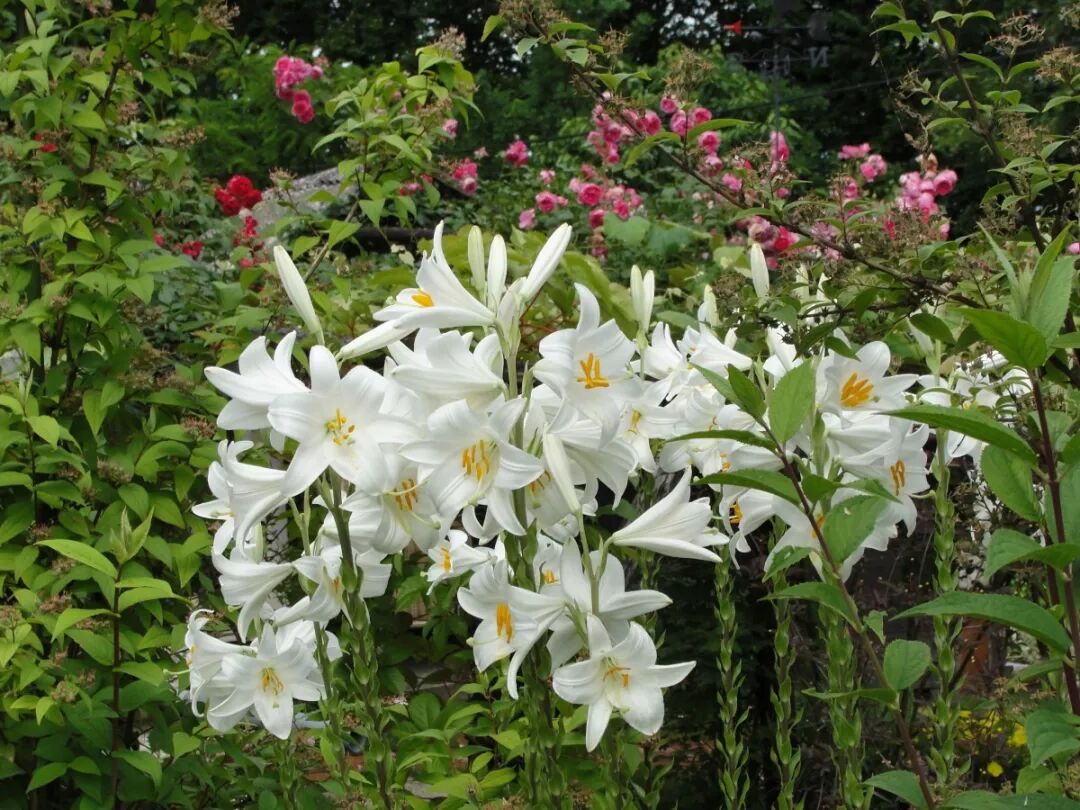
Madonna Lily. Image: PxHere

Representative of the Lilium genus with a 3000-year history
The Madonna Lily Lilium candidum is native to the eastern Mediterranean, including the Balkans, the Middle East, and Western Asia. It is a lily that is not very well-known today, but it was once one of the most historically and symbolically significant plants. The most famous association is its connection to the Virgin Mary, making it the most religiously significant flower, commonly referred to as the Madonna Lily.
Additionally, as it has become a naturalized plant in many regions of Europe, it is also known as the French Lily or Bourbon Lily, and some horticultural books directly translate it as White Flower Lily.

Images of the Virgin Mary and the lily are often seen in church stained glass windows. Image: PMRMaeyaert / Wikimedia
The specific epithet candidum shares the same root as the word candle, and its meaning is similar, referring to a brilliant white. The ancient Greeks especially favored white lilies, and although the Mediterranean region is rich in various bulbous plants, the local white varieties of lilies are quite rare, with orange and yellow being predominant, making the Madonna Lily very popular.
As early as 3000 years ago, the ancient Greeks cultivated the Madonna Lily as both an ornamental and medicinal plant. The genus name Lilium comes from the Greek word leírion, which some biologists believe specifically refers to white lilies, namely the Madonna Lily. Therefore, the Madonna Lily can be seen as the representative of the Lilium genus.
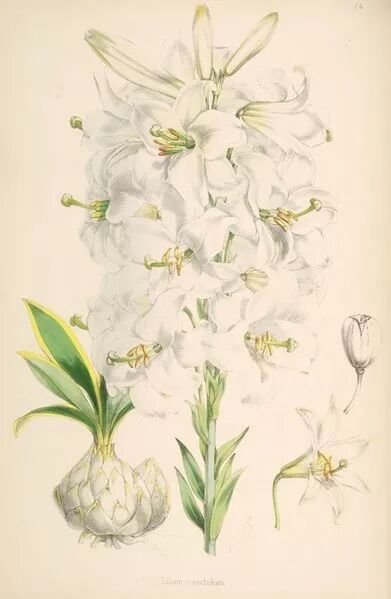
Despite being used as a medicinal plant by humans, the entire plant of the Madonna Lily is highly toxic to cats. If you have cats at home or if stray cats frequently visit your yard, it is advisable to avoid planting Madonna Lilies. Image: United States public domain

Truly related to the Virgin Mary
From the Old Testament to modern times, flowering plants have often been used in religion to express powerful spiritual symbols, carrying sacred meanings. In Christian legend, they are seen as creations of God, used to express and share God’s truth, goodness, and beauty. In the early days of Christianity, white lilies were associated with Mary, the mother of Jesus. In 2nd-century Christian legends, it is recorded that Mary’s tomb was adorned with white lilies.
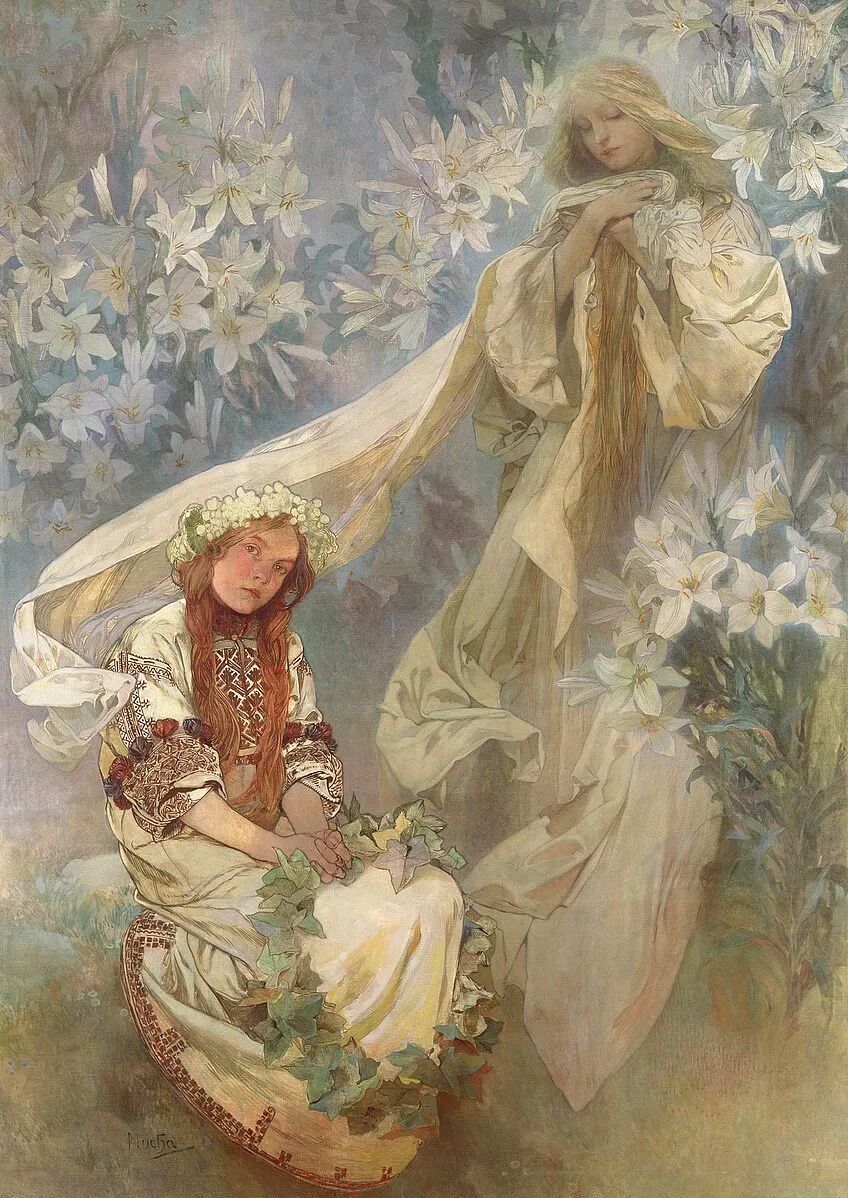
Madonna of the Lilies. The author is Alphonse Mucha, a representative of the Art Nouveau movement. Image: Wikimedia
In medieval Europe, where Catholicism was practiced, Mary was revered as the Virgin, and the white lily became the most recognized symbol of Mary. The petals of the lily symbolize Mary’s purity, innocence, and radiant soul, embodying purity and virtue.
Medieval churches, monasteries, and other places were often adorned with murals, sculptures, or stained glass depicting the Virgin Mary, where several bouquets of Madonna lilies could always be seen beside or in Mary’s hands. In images depicting Jesus’ preaching, the Archangel Gabriel, or Joseph, Jesus’ earthly father, this pure white lily can also be seen. Sometimes it is also referred to as St. Joseph’s Lily.
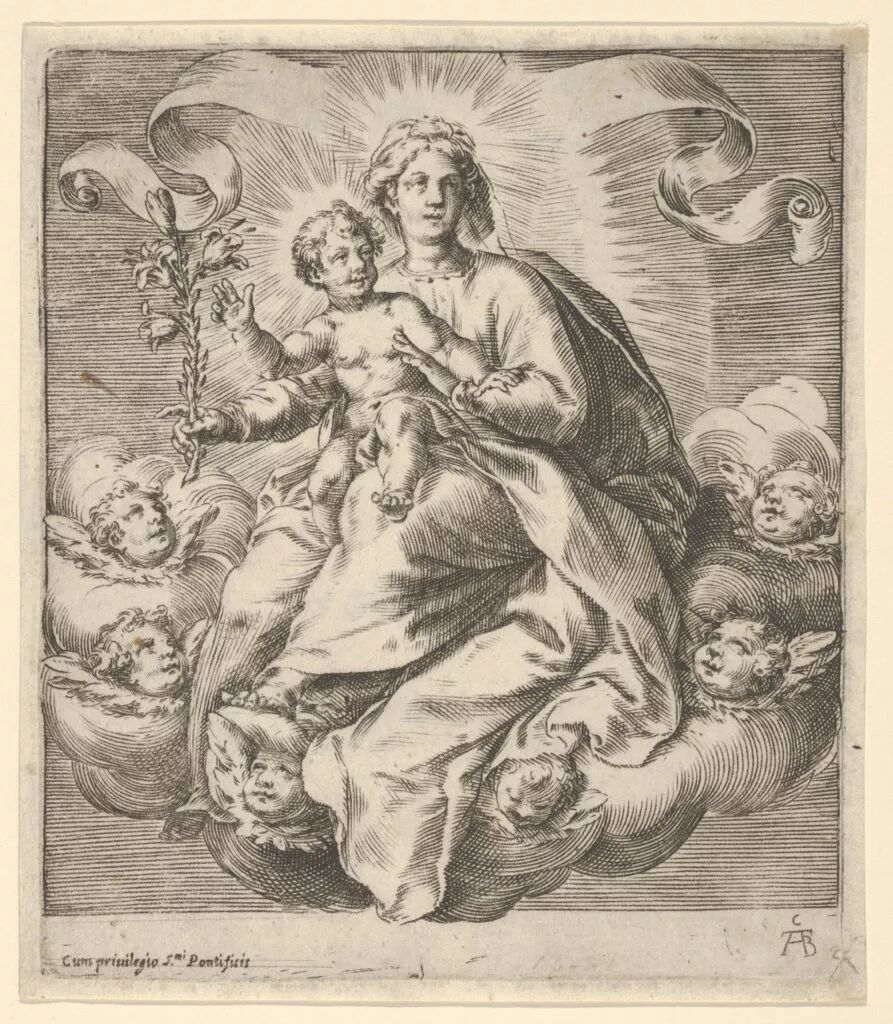
The Virgin and Child, with the Madonna Lily in the Virgin’s hand.
In various religious legends, including the Bible, lilies are often mentioned, but they are generally referred to simply as Lily, which can easily be confused with other plants, such as the lily of the valley, which is also known as Our Lady’s tears or Mary’s tears. According to legend, when Jesus was taken down from the cross, Mary’s tears fell to the ground and transformed into this “Lily”; when Eve was expelled from the Garden of Eden, her tears also fell to the ground and became this “Lily”. Both the Madonna Lily and the lily of the valley share this story.
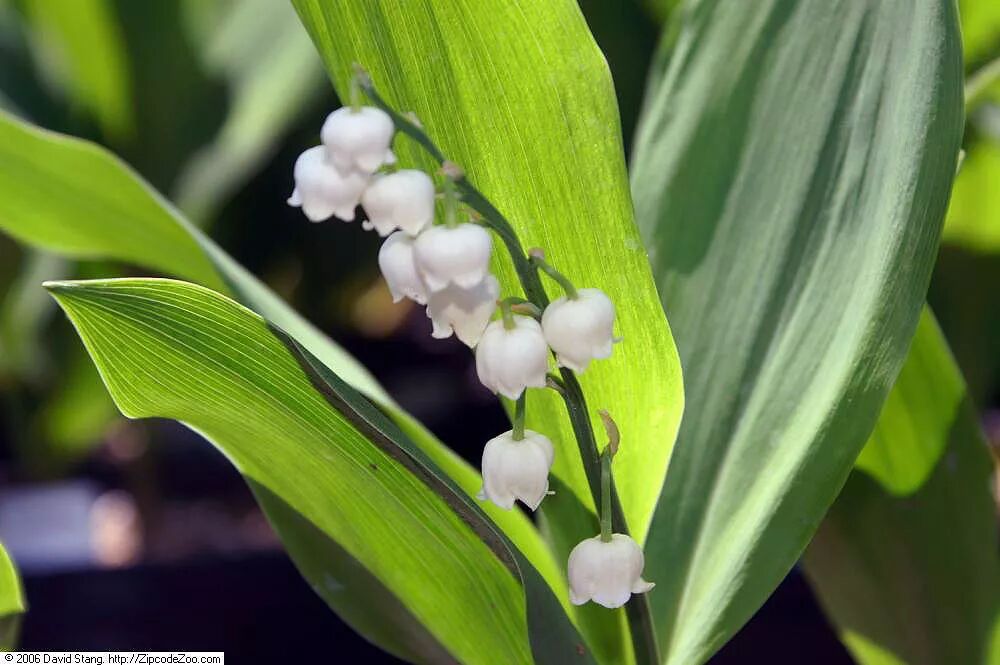
The lily of the valley introduced in the calendar a few days ago, click here to review. Image: David J. Stang / Wikimedia
Another lily with religious significance is the Easter Lily Lilium longiflorum, said to have originated from the sweat of Jesus during prayer. After Jesus’ resurrection, these lilies bloomed in the Garden of Gethsemane. However, the Easter Lily is actually native to Taiwan and the Ryukyu Islands and only became popular worldwide in the 19th century.
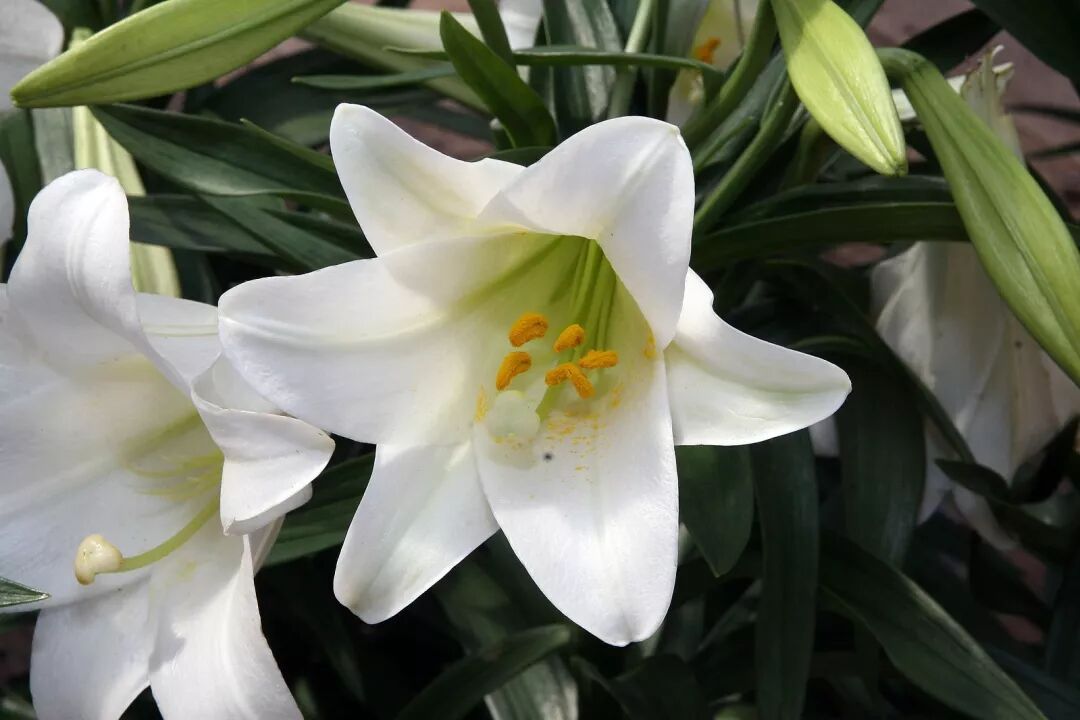
Easter Lily. Image: David J. Stang / Wikimedia

Now Out of Favor in Horticulture
Most lilies from temperate regions sprout stems and leaves in spring, bloom, and then gradually wither in the autumn. However, lilies like the Madonna Lily, which come from warm summer and mild winter regions, will grow a large cluster of leaves after the stems wither in winter, forming a rosette of leaves, which will die off before the new stems sprout the following summer.
Its planting method is also different; most lily bulbs need to be buried deeply, at least twice the height of the bulb; while the Madonna Lily can be planted shallowly, with the top of the bulb level with the ground.

Bulbs of the Madonna Lily. Image: Wilcox, Mike / Wikimedia
The Madonna Lily can be grown for ornamental purposes or as a cut flower, but in modern horticulture, it is clearly less popular than other lilies, as its disease resistance and ornamental value are inferior to other types of lilies—lacking the diverse colors and cold hardiness of Asiatic hybrids, the large, heavy, fragrant flowers of Oriental hybrids, and the elegantly curled petals of Martagon hybrids. In the realm of pure white lilies needed for religious and sacred occasions, it has also been replaced by the Easter Lily and the Regal Lily Lilium regale.
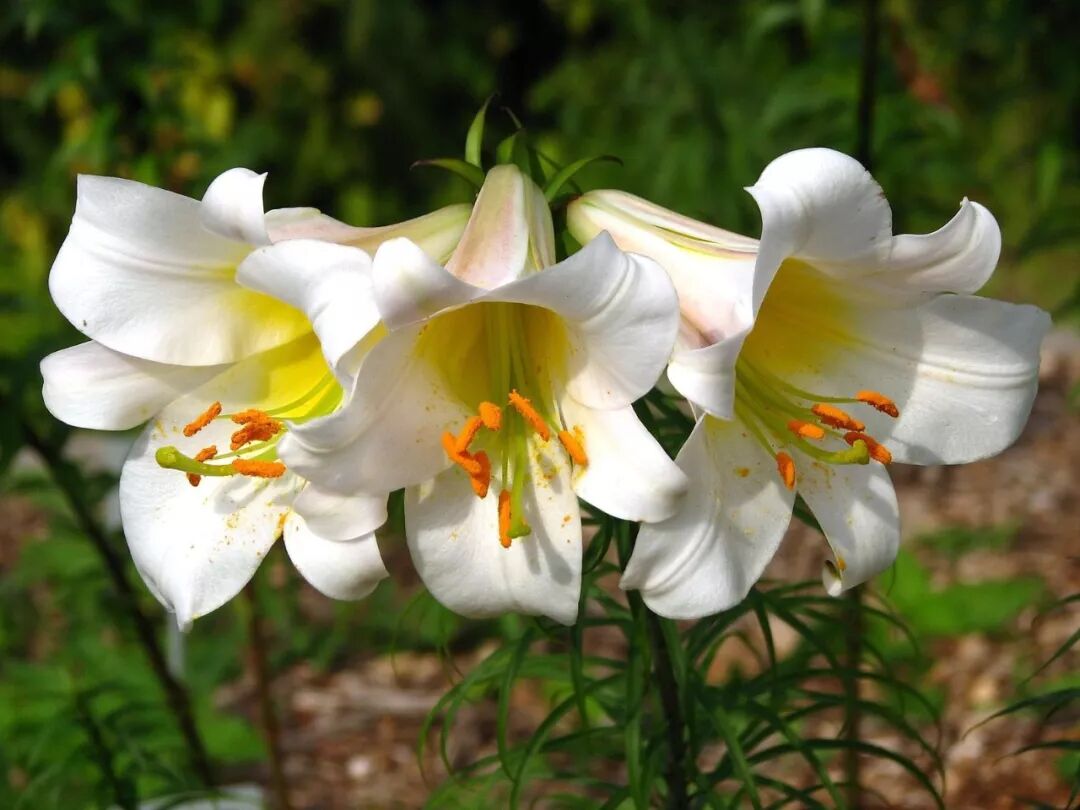
Regal Lily. Image: Андрей Корзун / Wikimedia
Today, perhaps only a few horticultural enthusiasts who appreciate pure white lilies and religious legends will still cultivate this historically significant lily.
This article is the 301st entry in the Species Calendar’s 5th year, from the author of the Species Calendar @霜天蛾.
Beautiful Flowers of the Lily Family
卷丹: The red flowers of the mountain dan dan bloom brightly.
麝香百合: Not sure who to fire at.
冠花贝母: Blooming exquisite little flowers like crowns.

This article is from Guokr, and sharing is welcome.
For reprints, please contact [email protected]